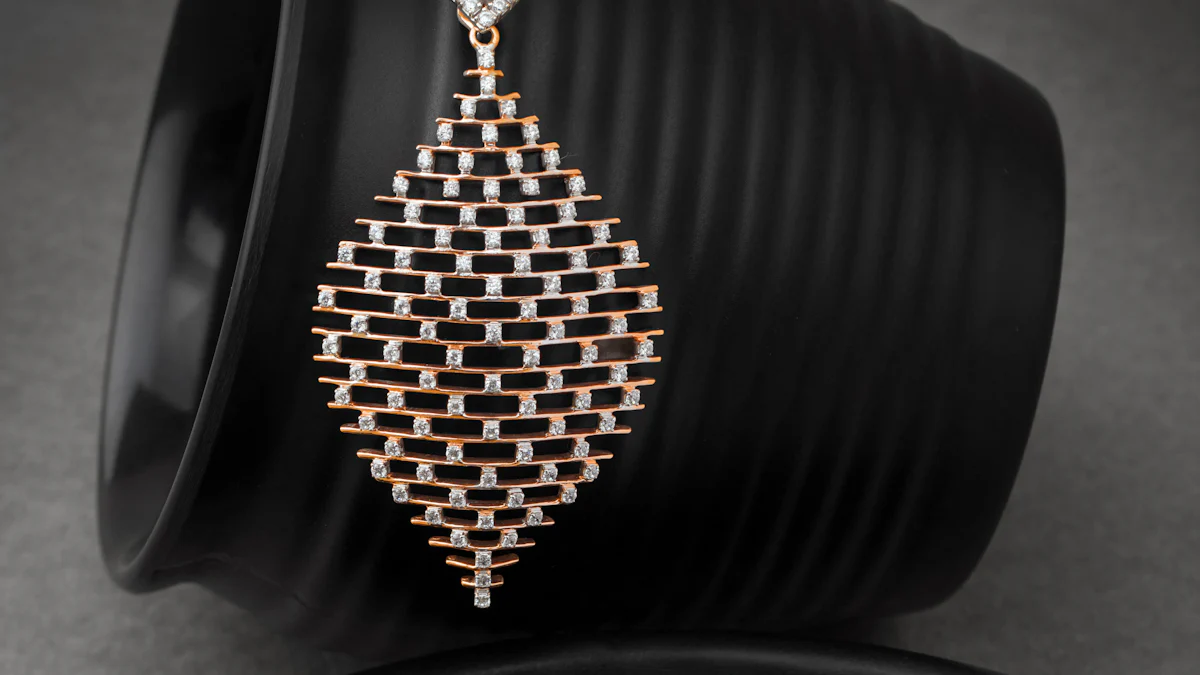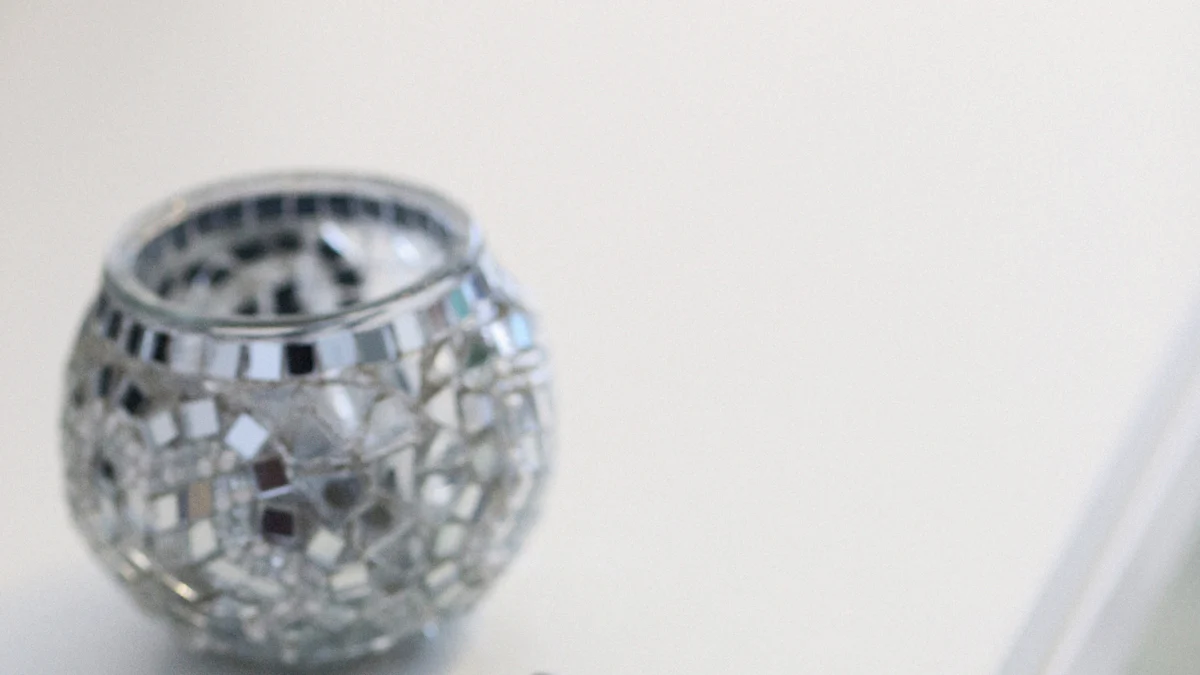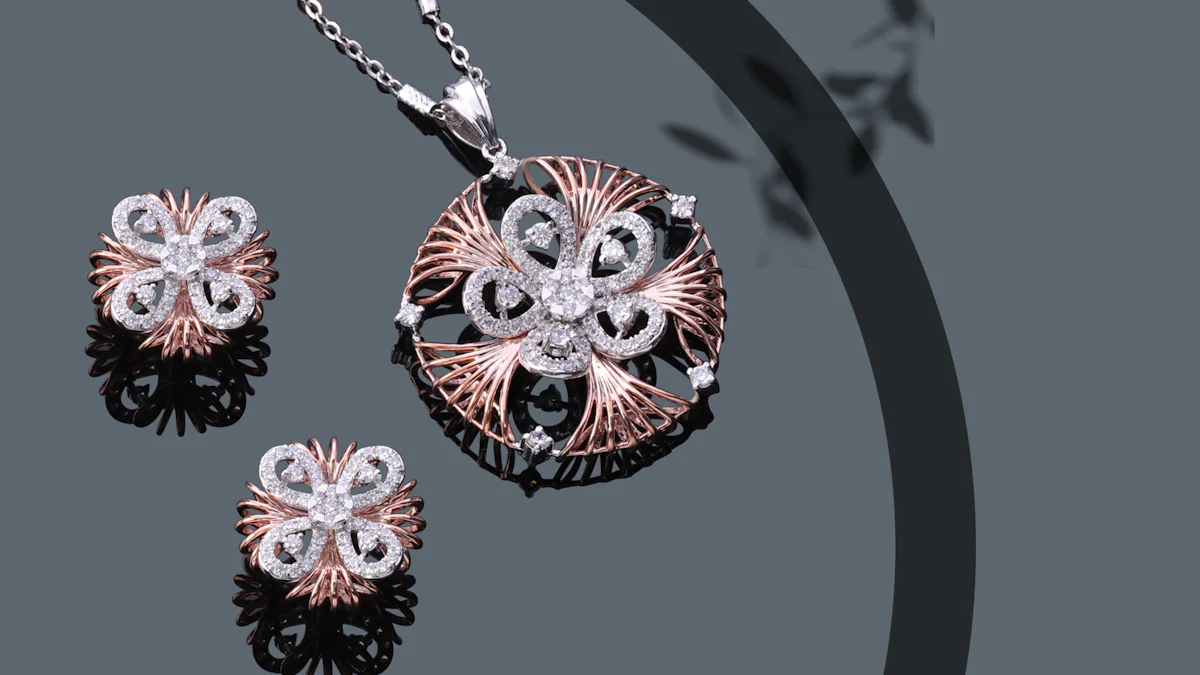Understanding What CTTW Means in Jewelry

Understanding what CTTW means in jewelry is essential for anyone interested in diamond pieces. So, what does CTTW mean in jewelry? CTTW, or Carat Total Weight, represents the combined weight of all diamonds in a piece of jewelry. This metric plays a crucial role in evaluating the value and appeal of diamond jewelry. By knowing the CTTW, you gain insights into the overall brilliance and aesthetic appeal of the item. This knowledge helps you make informed decisions, ensuring that you appreciate the true worth of your jewelry.
Key Takeaways
- CTTW, or Carat Total Weight, represents the combined weight of all diamonds in a piece of jewelry, helping you gauge its overall size and value.
- When purchasing jewelry, always consider the quality of the stones alongside CTTW, as higher quality can enhance the piece's value significantly.
- Use CTTW as a benchmark when comparing similar jewelry pieces, but remember that price can vary based on the quality of the gemstones.
- Consult with a jeweler if you're unsure about CTTW; their expertise can provide valuable insights into the jewelry's value and appearance.
- Avoid common mistakes like focusing solely on CTTW or assuming that a higher CTTW always means better value; evaluate the piece as a whole.
- Understanding CTTW empowers you to make informed purchasing decisions, ensuring your jewelry choices align with your preferences and budget.
What Does CTTW Mean in Jewelry?
When you explore the world of jewelry, understanding specific terms can enhance your buying experience. One such term is CTTW, which stands for Carat Total Weight. But what does CTTW mean in jewelry? Let's delve into its definition and calculation.
Definition of CTTW
CTTW refers to the total weight of all the diamonds or gemstones in a piece of jewelry. This includes not just the main stone but also any additional stones that contribute to the overall design. For instance, if you have a ring with a central diamond and smaller diamonds surrounding it, the CTTW accounts for the combined weight of all these stones. This measurement helps you gauge the overall size and impact of the gemstones in the jewelry piece.
How CTTW is Calculated
Calculating CTTW involves adding up the carat weight of each individual gemstone in the jewelry. Each stone's weight contributes to the total, giving you a comprehensive understanding of the piece's gemstone content. For example, if a necklace has three diamonds weighing 0.3 carats, 0.2 carats, and 0.5 carats, the CTTW would be 1.0 carat. This calculation provides insight into the jewelry's value and appearance, helping you make informed purchasing decisions.
Understanding what CTTW means in jewelry allows you to appreciate the craftsmanship and value of the pieces you admire. By knowing how to interpret this term, you can better assess the jewelry's worth and ensure it meets your expectations.
Importance of Understanding CTTW
Understanding what CTTW means in jewelry is vital for appreciating the full beauty and value of a piece. This knowledge not only enhances your appreciation but also guides you in making informed purchasing decisions.
Impact on Jewelry Appearance
CTTW significantly influences how a piece of jewelry looks. When you know the total carat weight, you can better visualize the overall presence of the gemstones. A higher CTTW often means more sparkle and brilliance, as the combined weight of the stones contributes to the piece's visual impact. For example, a ring with a higher CTTW will likely appear more dazzling than one with a lower total weight. However, remember that CTTW is just one aspect. The cut, color, and clarity of the gemstones also play crucial roles in determining the jewelry's appearance. By considering all these factors, you can truly appreciate the craftsmanship and design of the jewelry.
Influence on Buying Decisions
CTTW plays a pivotal role in your buying decisions. It directly affects the price of the jewelry. A higher CTTW usually translates to a higher price tag, especially if the gemstones are of high quality. When you understand what CTTW means in jewelry, you can better assess whether a piece is worth its price. However, don't rely solely on CTTW to determine value. Consider other factors like the cut, color, and clarity of the gemstones. These elements, combined with CTTW, provide a comprehensive understanding of the jewelry's worth. By evaluating all these aspects, you make informed decisions, ensuring that your purchase aligns with your expectations and budget.
CTTW vs. CT: What's the Difference?

Understanding the difference between CTTW and CT is crucial when evaluating diamond jewelry. These terms, while related, serve distinct purposes in describing the weight of diamonds.
Explanation of CT (Carat)
The term CT, or carat, refers to the weight of a single diamond or gemstone. When you see a diamond labeled with a specific carat weight, it indicates the mass of that individual stone. For instance, a diamond weighing 1 carat equals 200 milligrams. This measurement helps you understand the size and value of a single gemstone. Carat weight plays a significant role in determining the price and appeal of a diamond. Larger carat weights often mean higher prices, as bigger stones are rarer and more desirable.
Comparison Between CTTW and CT
While CT focuses on a single stone, CTTW (Carat Total Weight) encompasses the total weight of all diamonds in a piece of jewelry. This distinction is vital when assessing jewelry with multiple stones. For example, a ring with several smaller diamonds might have a CTTW of 1 carat, even if no single stone weighs that much. CTTW provides a comprehensive view of the jewelry's overall diamond content, helping you appreciate its full brilliance and value.
"CTTW accounts for the cumulative weight of all diamonds incorporated into the jewelry item."
How CTTW Affects Value and Pricing

Understanding how CTTW affects the value and pricing of jewelry is crucial for making informed purchases. This knowledge helps you appreciate the true worth of a piece and ensures that your investment aligns with your expectations.
Role of CTTW in Pricing
CTTW, or Carat Total Weight, plays a significant role in determining the price of jewelry. When you know what CTTW means in jewelry, you can better understand how it influences cost. A higher CTTW often suggests a higher price tag, as it indicates more gemstones in the piece. However, the relationship between CTTW and price is not always straightforward. While a larger total carat weight can enhance the visual appeal, the price also depends on other factors like the quality of individual stones.
"While the price of a diamond tends to increase exponentially with its carat weight due to rarity, the relationship between a jewelry item’s CTTW/CTW and its value is not linear."
This means that even if two pieces have the same CTTW, their prices might differ based on the cut, color, and clarity of the diamonds. By considering these aspects, you can make smarter purchasing decisions and find jewelry that fits your budget.
CTTW and Diamond Quality
The quality of diamonds significantly impacts the value of jewelry, alongside CTTW. When evaluating a piece, you should consider the 4Cs: cut, color, clarity, and carat weight. These factors collectively determine the overall quality and appearance of the diamonds. A higher CTTW with poor quality stones may not be as valuable as a lower CTTW with high-quality diamonds.
"CT T.W plays a significant role in determining the value and appearance of a piece, but it’s crucial to evaluate it alongside other factors."
By understanding the interplay between CTTW and diamond quality, you can better assess the true value of a jewelry piece. This approach ensures that you select items that not only meet your aesthetic preferences but also offer good value for your investment.
Evaluating CTTW When Purchasing Jewelry
When you shop for jewelry, understanding CTTW helps you make informed decisions. This knowledge ensures you appreciate the true value and beauty of the pieces you consider.
Tips for Assessing CTTW
-
Examine the Total Carat Weight: Look at the CTTW to understand the combined weight of all gemstones in the piece. This gives you a sense of the jewelry's overall size and presence.
-
Consider the Quality of Stones: While CTTW indicates the total weight, the quality of each stone matters too. Evaluate the cut, color, and clarity of the gemstones. High-quality stones enhance the piece's value and appearance.
-
Compare Similar Pieces: When comparing jewelry, use CTTW as a benchmark. Pieces with similar CTTW might differ in price due to the quality of the stones. This comparison helps you find the best value for your budget.
-
Seek Professional Advice: Consult with a jeweler if you're unsure about CTTW. They can provide insights into how this measurement affects the piece's value and appearance.
"CTTW is crucial when evaluating the value of jewelry. It provides valuable insights into the size, value, and significance of the gemstones used in a piece."
Common Mistakes to Avoid
-
Ignoring Stone Quality: Don't focus solely on CTTW. The quality of the stones plays a significant role in the jewelry's value. A piece with a lower CTTW but higher quality stones might be more valuable.
-
Overlooking Other Factors: Remember that CTTW is just one aspect of a piece's value. Consider other factors like design, craftsmanship, and metal type. These elements contribute to the overall appeal and worth of the jewelry.
-
Assuming Higher CTTW Equals Better Value: A higher CTTW doesn't always mean better value. Evaluate the piece as a whole, considering both the weight and quality of the stones.
-
Failing to Verify Information: Always verify the CTTW information provided by the seller. Ensure it matches the actual weight and quality of the stones in the jewelry.
By understanding and evaluating CTTW, you can make confident and informed decisions when purchasing jewelry. This approach ensures you select pieces that align with your preferences and offer good value for your investment.
Understanding CTTW is crucial for making informed jewelry purchases. This knowledge gives you valuable insights into the size, value, and significance of gemstones in a piece. By grasping CTTW, you can evaluate jewelry more effectively, ensuring your choices align with your preferences and budget. Always consider CTTW alongside other factors like stone quality and design. This comprehensive approach helps you appreciate the true worth of your jewelry, leading to more satisfying and confident buying decisions.
FAQ
What Does CTTW Mean in Jewelry?
CTTW stands for Carat Total Weight. It represents the combined weight of all diamonds or gemstones in a piece of jewelry. This measurement helps you understand the overall size and impact of the stones in the jewelry.
Can CTTW Be Customized in Jewelry?
No, you cannot customize CTTW in jewelry. It refers to the total carat weight of all gemstones in a piece. This measurement is fixed based on the stones included in the design.
What Is the Difference Between TW and CT TW in Jewelry?
TW stands for Total Weight, while CT TW stands for Carat Total Weight. TW measures the combined weight of all gemstones in a piece, including non-diamond stones. CT TW specifically refers to the total carat weight of diamonds in a piece.
How Does CTTW Affect the Price of Jewelry?
CTTW significantly influences the price of jewelry. A higher CTTW usually indicates more gemstones, which can increase the cost. However, the quality of the stones also plays a crucial role in determining the final price.
Why Is Understanding CTTW Important When Buying Jewelry?
Understanding CTTW helps you make informed purchasing decisions. It provides insights into the size and value of the gemstones in a piece. This knowledge ensures that you select jewelry that aligns with your preferences and budget.
Does a Higher CTTW Always Mean Better Quality?
Not necessarily. A higher CTTW indicates more gemstones, but it doesn't guarantee better quality. You should also consider the cut, color, and clarity of the stones to assess the overall quality of the jewelry.
How Can I Verify the CTTW of a Jewelry Piece?
You can verify the CTTW by consulting with a reputable jeweler. They can provide detailed information about the total carat weight and quality of the stones in the piece. Always ensure that the CTTW matches the seller's description.
Is CTTW Relevant for All Types of Jewelry?
Yes, CTTW is relevant for any jewelry piece containing multiple gemstones. It helps you understand the total weight and impact of the stones, whether in rings, necklaces, or bracelets.
Can Two Pieces of Jewelry Have the Same CTTW but Different Prices?
Yes, two pieces can have the same CTTW but different prices. The difference often arises from the quality of the stones, the design, and the craftsmanship involved in creating the jewelry.
What Should I Consider Besides CTTW When Buying Jewelry?
Besides CTTW, consider the quality of the stones, the design, and the type of metal used. These factors contribute to the overall value and appeal of the jewelry, ensuring that it meets your expectations.
See Also
Comparing Tungsten Diamond Rings And Traditional Options
A Guide To Diamond Cuts For Engagement Rings
Discovering Various Styles Of Diamond Wedding Rings

